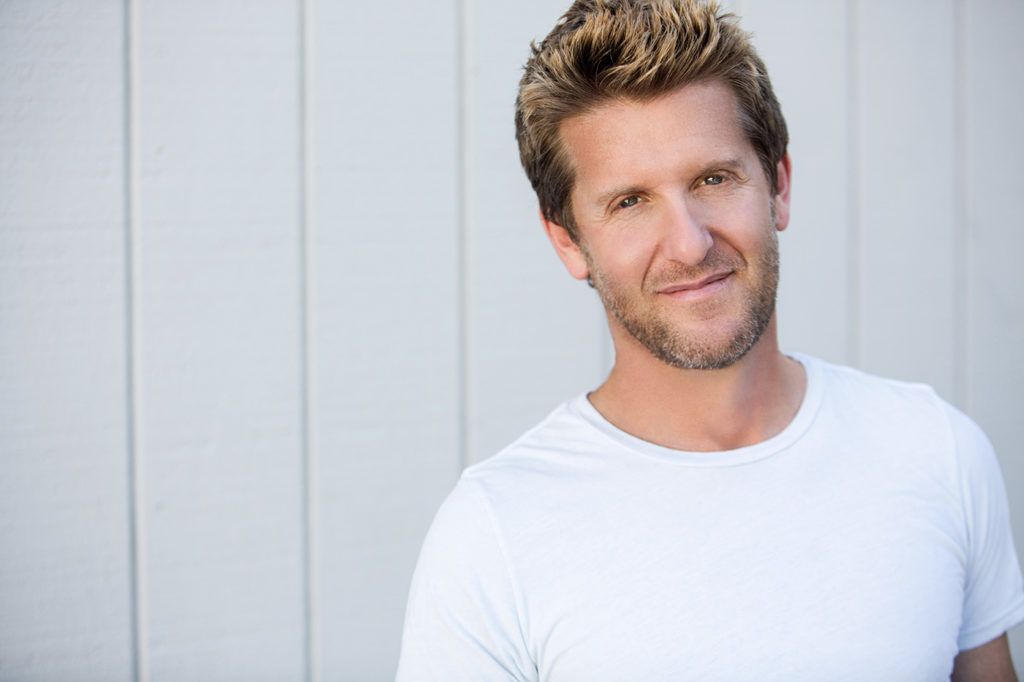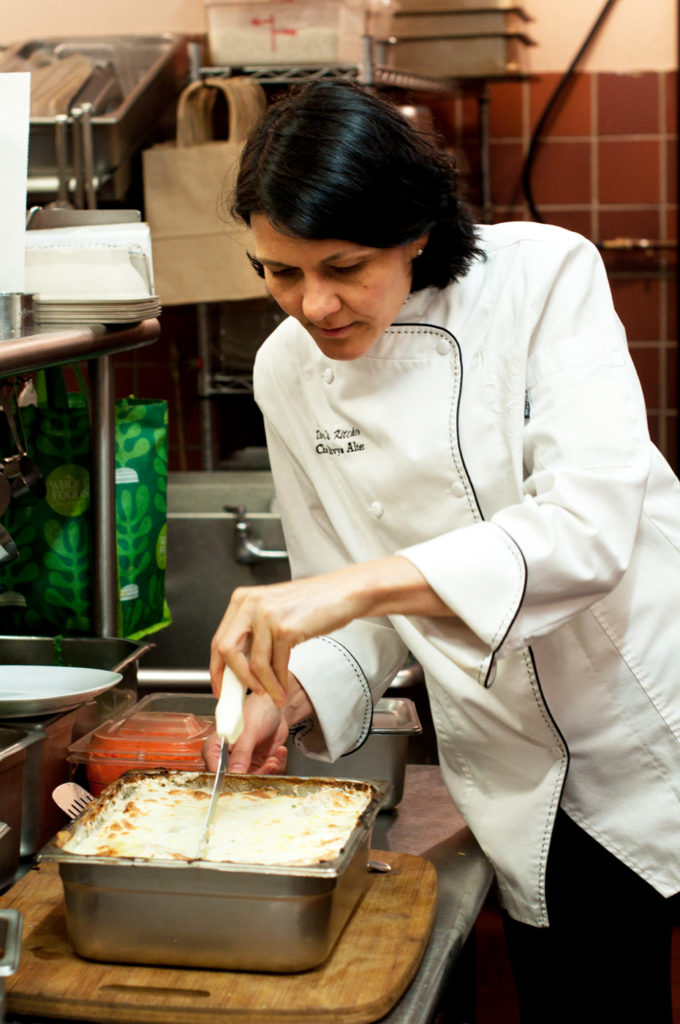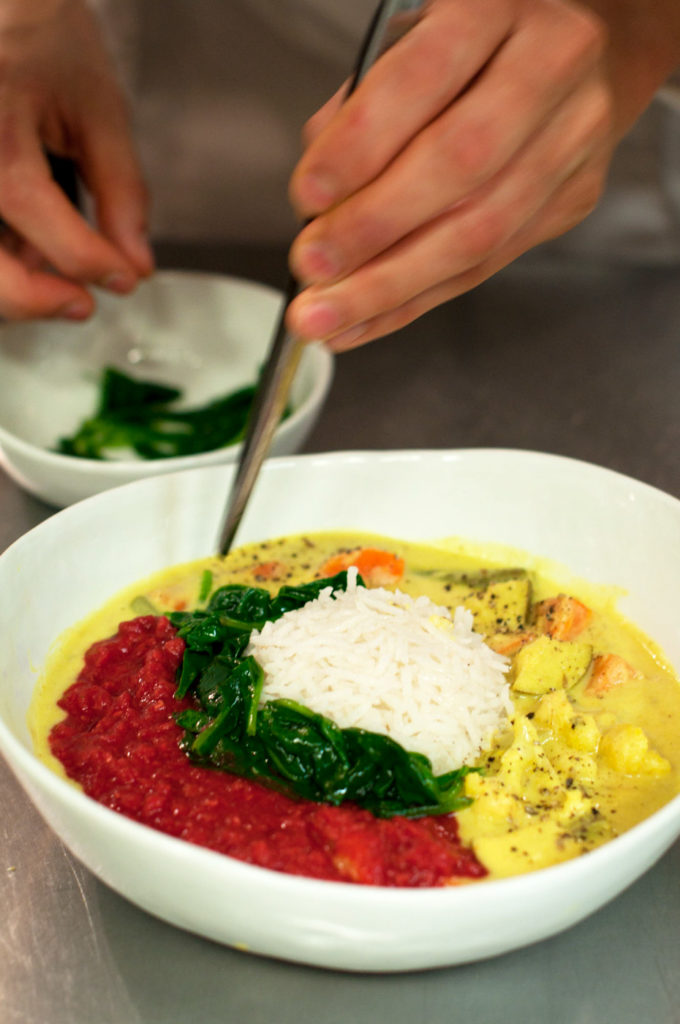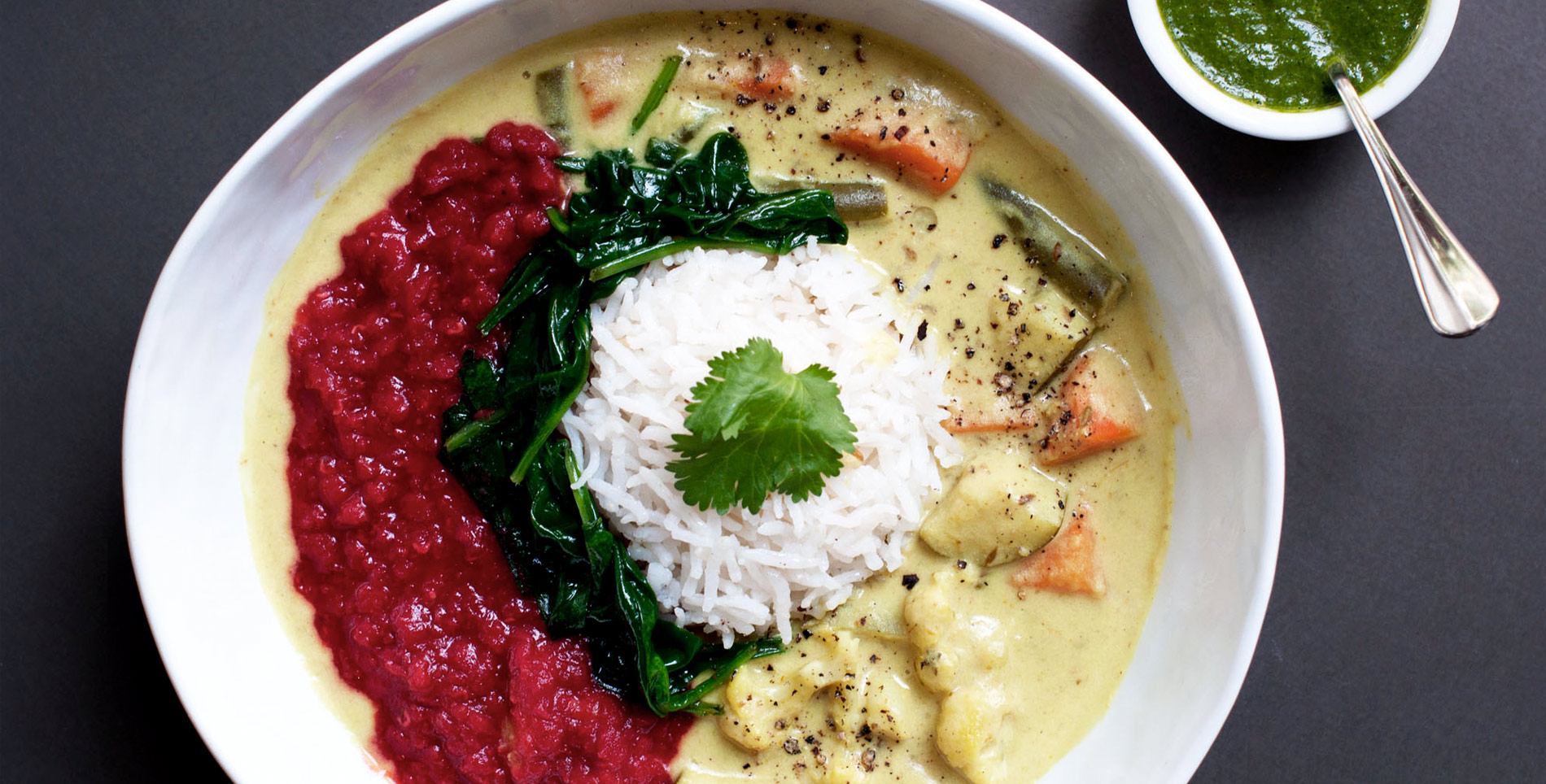Maybe you’re doing what I did. Ayurveda sounded interesting enough; it was a word I saw intermittently on health food store magazines or used as adjective to explain why some elixir was a better choice than the double americano I was considering. I even knew it was associated with yoga, something I’ve practiced for nearly four years, but had filed neatly in my “when I get up early enough” box—a box whose contents rarely mixed with other boxes and that I opened mostly just to stretch and stay anxiety-free in the mornings. Ayurveda, I assumed, was for those serious folks—those far more committed than I.
But then I chat with Marc Holzman.
“Ayurveda can get very granular,” Holzman begins. He calls me from his home in Paris, where he lives half the year teaching yoga and Ayurveda—the latter being a more than two thousand-year-old philosophy that originated in India to treat the mind, body and spirit.
Holzman has been teaching yoga for almost twenty years. Three years ago he went back to school to become a practitioner after an Ayurvedic doctor dramatically reoriented his framework for a healthy life. “I had to have open heart surgery, which is a completely Western procedure,” he explains. “In preparation for the surgery, someone in my yoga community gave me the name of an Ayurvedic doctor. What he did was basically prescribe some herbs and some lifestyle changes that were so profound and so impactful before my surgery.” That’s when Holzman became interested in the ideology as a vocation. And given the vast history of the practice, there was a lot to learn.
“When we talk about the doshas and the sub-doshas… I mean, it can get pretty complex,” he admits. “But if you take all of that complexity and distill it down to the one philosophy of Ayurveda, it really is: How can we, as human beings, live in better synchronicity with nature?”
That’s why Holzman and I are talking. Not because I’m in the market for a new vocation (although, never say never), but because I’m curious about this synchronicity. We all know how easy it is to orient ourselves around the wrong things: phones in bed, meals on the go, treating sleep as a luxury instead of a necessity. It almost feels cliché now. And yet, despite the popularity of self-care and digital detoxes, I’ve continued to feel a strain in wanting to feel more human—as if, somehow, compartmentalizing my life in boxes may be efficient, but it misses the mark.

Holzman would say I’m not alone. “We have in yoga something called apana vayu,” he says. “The vayu is a little wind, and we have five of them going through our body doing different functions,” Holzman explains. “The apana vayu is the movement or wind in the body that’s responsible for moving things down and out.”
I had assumed those seeking Holzman’s expertise would be super-yogis trying to up their practice, but Ayurveda attracts a broader group—people experiencing a variety of modern-day concerns. “I seem to see a lot of students and patients with these apana vayu issues—inability to conceive, under or over menstruation, constipation, diarrhea or bladder infections, things like that. Which sound to me that we, as a culture, are finding it very difficult to find a heavier earth kapha, or grounded energy, because we’re living now in such a high technology, twenty-four-seven, information age.”
More like something bigger is nudging at our humanity; something that—no matter how far we progress or evolve—we can get better at ignoring, but not effectively escaping.
Holzman details why doshas, the energy forces he references, are central in Ayurveda. There are three main ones to know: vata, comprised of space and air; pitta, comprised of fire with a little water; and kapha, comprised of water with some earth. All three are found both in nature and in human beings.
“Everybody is made of the five elements [wind, water, earth, fire, space], but what makes me different from you is the proportion in which these elements show up in our bodies,” Holzman explains. “Some people have more fire in their constitution. They are just born that way, and some people are just little more earthy and watery. But once you know what your constitution is, your dosha [and visiting an Ayurvedic practitioner will help with this], Ayurveda has a list of foods that are better for certain doshas, and maybe ones you should not be eating.”
Holzman points out the importance of eating and processing food to the practice. “Ayurveda is spectacularly obsessed with digestion. It has all these other things going on but Ayurveda will always return to the gut to figure out what’s wrong. Your immune system is there. Disease starts there. If that system is off—if that system is not working—nothing is going to be working.”
And here’s where we get to the crux of Ayurveda. If you’re like me, then the tendency would be to immediately leap into the box of dos and don’ts for your dosha. But according to Holzman, that would be missing the point. Ayurveda isn’t just about your constitution; it’s about aligning your constitution to fit into the natural rhythms around you. This is the premise of the dinacharya, the Ayurvedic cornerstone prized in its ancient texts. It means the “daily routine,” or habit, that will best get you back in alignment with how nature operates.
Holzman goes on to explain that dinacharya means simply that humans should conduct daily activities in accordance to their dosha at different times of day. “That there’s a more appropriate time of day to eat the biggest meal of the day, for example. And that there’s a more appropriate time of day to do your more physical hatha yoga practice. It doesn’t mean you can’t do your yoga practice at any time, but why not do it when the kapha dosha in the morning—which is a more physical body—is more dominant?” he asks. “I think we can agree five in the morning doesn’t feel like one in the afternoon. It’s part of the same day but it doesn’t look like it or smell like it. It just has a different energy dancing through.”
In fact, every four hours one dosha energy gives way to another. This cycle is a constant; so long as we’re diurnal humans and not nocturnal animals, we’ll feel our best if we aim to follow the sun’s cues. “Our agni—which in Ayurveda means our digestive fire—is considered to be the strongest between the hours of about ten and two in the afternoon,” he says. “This is pitta time. Obviously, fire—sun—is at its peak. It’s proposed that your largest meal of the day should be eaten between these hours because your capacity to digest the bigger, heavier stuff is optimized. Your agni has a cycle; your digestion has a cycle. It’s not just the same throughout the whole day.”
Our agni is also why the body responds so well to routine, hence the dinacharya. Regardless of whether you leap out of bed at dawn or are a self-professed night owl, a body’s elements crave routine. “The body craves regulations and standardization,” Holzman urges. “It loves to know when it’s going to eat. It loves to know when it’s going to bed. There’s already so much unpredictability and volatility in our lives. If we can carve out these simple routines, that’s what the dinacharya is.”
Another core tenet of Ayurveda is to make sure the food being digested in the first place is highly pranic. Prana is the yogic word for life force or vitality or, according to Holzman, simply food that’s smart. Think: organic, from the earth, straight from the vine.
“The more intelligent your food is, the more prana it has,” he explains. “If you put really high pranic food into your body, you’re going to feel it. Your body understands it and it’s going to recognize it. You’ll flourish.”
For more on flourishing foods I turn to Divya Alter, trained in Shaka Vansiya Ayurveda and owner of New York City’s Divya’s Kitchen. Hers is consistently ranked as one of the top vegan and vegetarian restaurants in the city and most recently, the top in the entire state—an impressive feat for a restaurant that doesn’t serve alcohol and closes at 10 p.m. in the city that never sleeps.






I’ve called her to find out more about Ayurveda “in the wild.” What’s its receptivity like beyond the yoga world and, more importantly, what does Ayurvedic food taste like?
“A lot of people think Ayurvedic food is Indian food,” Alter admits, “because Ayurveda came from India, but that’s not true. Ayurveda is a universal science and it can be applied anywhere in the world.”
By definition, Ayurvedic food has two aspects, she tells me. The first is the collecting and combining of ingredients called, in Sanskrit, samyoga. There are certain foods that shouldn’t be combined if you want to digest them well—for example, milk and salt.
“We have lasagna and we make it with béchamel sauce,” Alter tells me. “Traditional béchamel sauce is made with cream or milk, flour and salt, but in Ayurveda salt and milk are incompatible for digestion; they actually lower the immune system.” So she makes hers with fresh almond or cashew milk.
Another example is fresh fruit. Ayurveda cautions that eating fresh fruit with cooked food will not support digestion, so Alter swaps in a cooked fruit compote with her gluten-free waffles. She also doesn’t serve nightshades—eggplants, potatoes, peppers or tomatoes—citing them as inflammatory. No leftovers either, as another Ayurvedic note is that leftovers are very hard to digest.
“There are very few chefs out there who actually think, ‘How are my guests going to digest this?’” she says. “But that’s one of the first things I think about.” She’s hitting on the second aspect of Ayurvedic food, samskara, the method of preparation that supports digestion but also preserves the prana of food as much as possible. And that’s worth it to her, whether that’s using flour she’s milled herself, or only Himalayan or real salt (“Not that white stuff”), Alter’s aware of how Ayurveda increases her cost—but that’s also not her bottom line.
Alter offers advice for making Ayurveda more accessible to the average eater too, understanding that eating for your dosha according to the internet’s “lists” can be “incomplete, confusing and even damaging.” Alter released a cookbook in 2017, What to Eat for How You Feel: The New Ayurvedic Kitchen, to try to reduce some of the mystery around the lifestyle. “My teachers trained me to help people eat seasonally, according to your digestion. This is a more balanced and accurate way of eating, and it’s easier to figure out even if you don’t have access to an Ayurvedic practitioner to tell you what your dosha is. This is how I’ve organized my cookbook,” she says.
Regardless of approach, Atler explains the intention of the practice is as simple as feeling good. “Ayurveda looks at food as medicine, not just to fill your belly but also using food to balance yourself, depending on what your body and your mind need,” she continues. “This is one of the goals of Ayurveda: to help us maintain balance, or bring us back to balance.”
Holzman agrees. “It’s not just about feeling good for the sake of feeling good,” he says. “That’s going to happen as a byproduct. [Ayurveda is] also about, how can I be the best version of myself in this lifetime?” He says, “It may have started in India, but it’s universal. As long as there’s life, there’s going to be the science of life and the possibility of healing. And nature will always heal.”







Our comments section is for members only.
Join today to gain exclusive access.